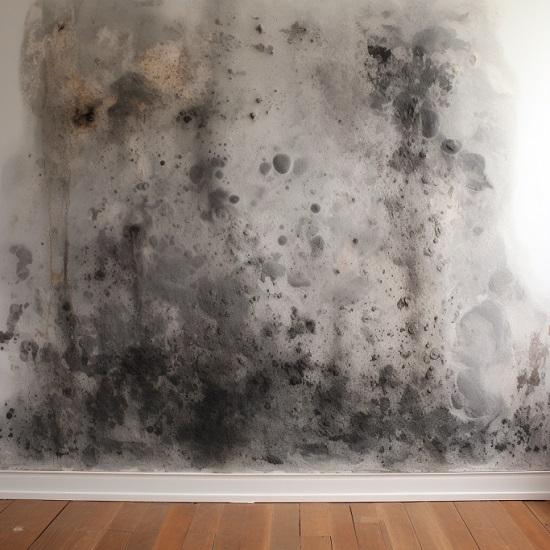Reliable Post Mold Remediation Cleaning Protocols
Reliable Post Mold Remediation Cleaning Protocols
Blog Article
Expert Tips for Message Mold And Mildew Removal Success
In the realm of mold remediation, effectively getting rid of mold and mildew is only half the battle; the true challenge depends on preventing its reappearance. Post-remediation initiatives play a vital role in making sure a mold-free setting in the long-term. By sticking to expert suggestions and finest methods, individuals can secure their areas against mold revival and preserve a healthy indoor environment. It is in this phase of the remediation process that attention to detail and proactive measures really make a difference.
Display Moisture Levels On A Regular Basis
After completing mold remediation treatments, maintaining optimal moisture degrees is important to protect against mold re-growth and make sure a healthy and balanced indoor environment. High moisture degrees above 60% produce a favorable setting for mold and mildew to thrive, making normal checking an aggressive procedure to prevent any future mold problems.
Making use of hygrometers or dampness meters can assist in accurately measuring humidity levels in different areas of the property. These devices provide real-time data that allows remediation experts to make educated decisions pertaining to air flow, dehumidification, and various other needed activities to keep ideal humidity levels post-remediation. Additionally, establishing a routine timetable for humidity checks, specifically in risky locations such as shower rooms, basements, and kitchens, is a positive approach to mold avoidance. By constantly keeping an eye on moisture levels, residential or commercial property proprietors can properly reduce the risk of mold reoccurrence and keep a healthy interior setting post-remediation.
Conduct Thorough Inspections Post-Remediation
Adhering to the conclusion of mold remediation procedures, it is essential to conduct thorough examinations to validate the efficiency of the removal procedure. These post-remediation inspections are crucial in guaranteeing that the mold problem has been successfully dealt with and that there is no reoccurrence or remaining mold growth. Assessments must be accomplished by certified professionals that have experience in identifying mold and mildew and examining interior air top quality.
Throughout these inspections, different techniques such as aesthetic assessments, air sampling, and surface area tasting may be utilized to completely assess the remediated areas. Visual assessments include a detailed assessment of the facilities to look for any type of visible indications of mold and mildew development or water damages. Air tasting aids in figuring out the airborne mold spore degrees, while surface area sampling can detect mold bits on surfaces.
Implement Correct Air Flow Methods
After guaranteeing the performance of the mold remediation procedure through detailed inspections, the following vital action is to concentrate on executing appropriate air flow methods. Adequate ventilation is essential in preventing mold and mildew reoccurrence by controlling wetness levels and advertising air blood circulation.
Proper ventilation not just help in stopping mold growth but additionally adds to the total wellness and comfort of occupants. By making certain ample air flow throughout the building, you can minimize the danger look at this web-site of mold and mildew regrowth and develop a much healthier living environment.

Usage Mold-Resistant Materials for Repairs
To improve the long-term performance of mold removal efforts, including mold-resistant materials for repair work is crucial in minimizing the danger of future mold and mildew growth. Mold-resistant materials are developed to withstand wetness and inhibit mold development, making them a vital selection for areas vulnerable to dampness and humidity. When fixing areas influenced by mold, utilizing materials such as mold-resistant drywall, mold-resistant paints, and mold-resistant caulking can aid avoid mold and mildew recurrence.
Mold-resistant drywall is a superb alternative to conventional drywall in locations like basements and restrooms where dampness degrees are higher. This kind of drywall has an unique finish that resists mold and mildew development even when exposed to damp problems. In addition, utilizing mold-resistant paints consisting of antimicrobial representatives can better hinder mold and mildew growth on wall surfaces and ceilings.
In locations where dampness is common, such as bathroom and kitchens, utilizing mold-resistant caulking around bathtubs, windows, and sinks can aid seal out water and prevent mold and mildew from holding in fractures and crevices. By purchasing these mold removal on concrete mold-resistant products throughout repair services post-remediation, you can substantially lower the possibility of future mold concerns and preserve a much healthier indoor environment.
Maintain Sanitation and Address Water Issues
After mold removal, it is vital to maintain a clean atmosphere to protect against the regrowth of mold. Leaks, water intrusion, or high humidity degrees can develop the perfect reproduction ground for mold and mildew, so it is vital to fix any kind of water-related problems promptly.
To keep sanitation, think about using HEPA filters in vacuum cleaners and air cleansers to trap mold and mildew spores and avoid their flow in the air. Guaranteeing appropriate air flow in locations vulnerable to moisture buildup, such as restrooms and kitchen areas, can help maintain moisture levels in check. By staying cautious about cleanliness and attending to water problems promptly, you can efficiently avoid mold reinfestation and preserve a healthy interior setting.
Conclusion

In the realm of mold and mildew removal, effectively eliminating mold and mildew is just half the fight; the real challenge exists in avoiding its reappearance. After finishing mold remediation treatments, maintaining optimum humidity levels is critical to protect against mold re-growth and make certain a healthy indoor environment. High humidity levels above 60% produce a favorable environment for mold and mildew to thrive, making regular checking a positive measure to avoid any type of future mold problems.
To boost the lasting performance of mold and mildew remediation efforts, including mold-resistant products for repair services is important in alleviating the threat of future mold and mildew growth. After mold and mildew removal, it is essential to preserve a tidy setting to avoid the regrowth of mold and mildew.
Report this page